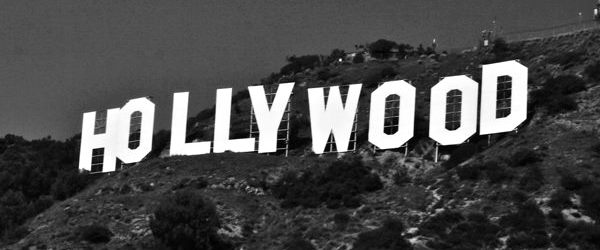
The dark side of Hollywood: child sex abuse
Thanks to the media, even a mere accusation of sexual abuse committed by a priest long ago will irreparably shatter the livelihood of the priest. No matter how flimsy or how long ago the accusation, a priest is always presumed guilty in the media, and his reputation is destroyed as the accusation is splashed across the front pages and the media floods the story with coverage.
But when it comes to Hollywood stars convicted or accused of abusing children, the convictions or accusations are largely ignored by the media and then quickly forgotten and can sometimes even be a boon for their careers. Consider these Hollywood celebrities and the price they paid for abusing children:
The funny woman of NPR
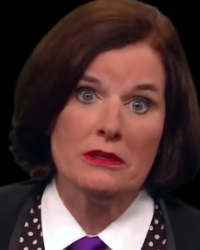
Paula Poundstone
What audiences may not know is that on June 27, 2001, Poundstone was arrested and charged with three counts of committing a lewd and lascivious act on a girl under the age of 14 and one count of child endangerment.
To avoid jail time, Poundstone pleaded no contest to one count of felony child abuse and a misdemeanor count of "inflicting injury upon a child." (The New York Times cited a Los Angeles Assistant District Attorney who said the misdemeanor charge involved "inappropriate touching.")
The court records were sealed, but naturally there was no outcry by the media over the secret proceedings or demand that the records be made public.
Puff the Magic Pardon?
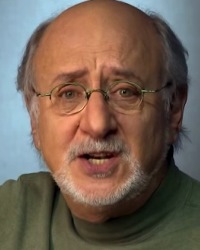
Peter Yarrow
However, Yarrow only served three months in prison for the molestation. And in the waning days of his administration in 1981, President Carter magnanimously pardoned Yarrow. (That's right. A president pardoned a convicted child molester.)
Yarrow's career continued unabated by his pesky conviction on child molestation charges. (Yarrow even performed publicly between his arrest and his sentencing!) Peter, Paul, and Mary continued to enjoy several years of touring to adoring fans, and Yarrow even pursued solo projects including one ironically of a children's book.
Woody's case in focus
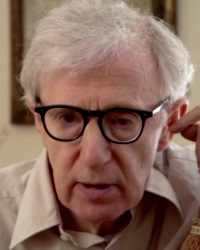
Woody Allen
The precise truth may never be known, but none of the compelling evidence in the case has hindered Allen from continuing to be one of the most heralded directors in Hollywood. Tinseltown continues to shower Allen with awards year after year, and actors fall over each other in hopes to star in one of his films.
Interestingly, one of Allen's most successful films is Manhattan, whose plot revolves around a divorced writer who dates a 17-year-old teenager. And right on cue, Hollywood showered the ironic film with numerous awards.
Granting coveted awards in Hollywood to accused child molesters in nothing new. In a previous post, we noted that Kevin Clash, the actor behind the popular Sesame Street character Elmo, won three Emmy awards even though at the time he had been accused by four different individuals of abusing them.
Then there are the well-known cases of Michael Jackson and Roman Polanski, whose careers were wildly successful following child sex abuse charges against them.
Meanwhile, it has been nearly three years since popular 1980s actor Corey Feldman boldly declared:
"I can tell you that the No. 1 problem in Hollywood was and is and always will be pedophilia. That's the biggest problem for children in this industry … It's the big secret."
Yet the mainstream media continues to remain deafeningly silent about sex abuse in Hollywood today, busy as they are with issues of abuse in the Catholic Church many decades ago in the 1960s and 1970s.
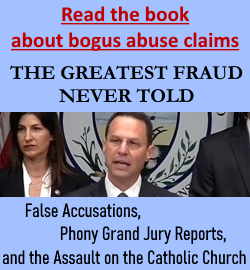

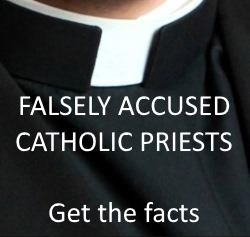
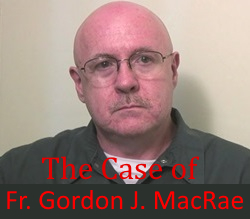
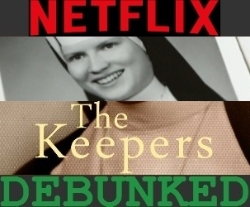
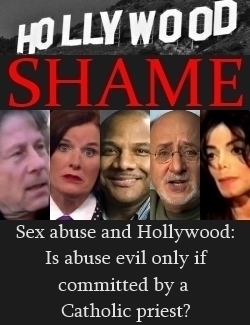
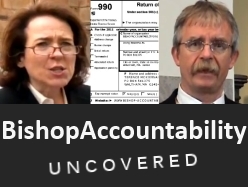
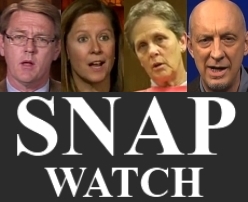
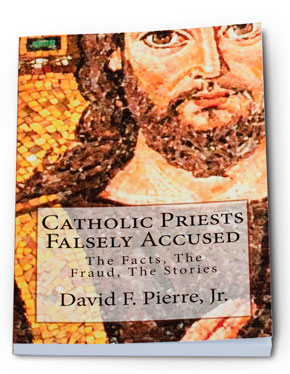
More for the notebook on the Playbook.
On the 30th at 623PM we first get a sentence (beginning “No like every”) that is grammatically even more flawed than usual from this commenter. This is not nit-picking: it seems to me that the level of grammatical errors increases with the confusion in the mentation, for whatever reason(s).
As for the point it’s trying to make: the point doesn’t seem to make much sense. As best I can make out, it is trying to say that JR (“like every other narcisstic person” (sic) – whatever that means) assumed that when he gets religious “news” then everybody else would get the same “news” and – the Wig of Rueful Pronouncement – he must now conclude that that is “obviously not” the case.
Or are we to imagine here that JR’s being-“narcisstic” (sic) is somehow an excuse? And perhaps we are supposed to consider him – waitttt for ittttttt – a ‘victim’ of narcissism and that should excuse everything? And – but of course – if we apply the relevant Abusenik dogma then we get this: JR was perfectly well-adjusted until his ‘rape’, and since then he has become “narcisstic” so it’s all the Church’s fault. You see how this thing works.
I would say that the problem here is in what JR assumes to be “news”; others (except apparently all those other narcissists) who don’t make his trademark assumptions clearly wouldn’t commit themselves to such an erroneous path in their assessment of what-is and what-isn’t “news”.
He reveals that he came into the “movement” applying the simple criterion that “if you knew the hierarchs were responsible for this scandal; you were o.k.” (sic) So we see an example of persons already coming into the “movement” with an agenda; they weren’t going to allow themselves to be confused or delayed by facts (or the lack of them).
And yet then, this revelation: “But that wasn’t why all those people were there.” No, it most likely wasn’t, and I would say that they were there in search of useful vessels to carry them to the pot of gold at the end of their personal rainbow. Which, of course, was precisely what SNAP had committed itself to provide after Blaine said Yes to Anderson.
Then the vague bits about how “good catholics” didn’t follow their scripted role and “rally around us” (that “us” meaning, I would say, JR) but instead began to act “controllingly”; the term here is conveniently left undefined, and one can only imagine what ‘controlling’ means here: perhaps anybody who tries to correct or rein in Cartoon thinking is nothing but a compulsive ‘controller’ – and few clinicians or even teachers would be unfamiliar with such a train of thought (so to speak).
And who are “those who haven’t been injured” in whose service SNAP’s “party line” was allegedly working?
Then an epithet (surprise, surprise) because – I and we are told – “billions are nothing”. Really? Seriously?
And then a fine little example of ‘mimimizing’: it’s only been “one and a half billion dollars”. From all the numbers I’ve encountered, that amount was surpassed quite a while ago. (Readers are welcome to put something like ‘amount sex abuse claims have cost the Catholic Church’ into their search engine and see what current figures come up.)
And on that score I would point out an interesting bit of media manipulation: on Feb. 12, 2012 John L. Allen, Jr. – then writing on the NCReporter site – used the term 2.2 billion. But then – surprise, surprise – he uses the number of 100,000 victims. The sly game here is this: rather than put up the unpleasantly suggestive actual fact that that amount was split among only the 12 thousand or so allegants, he switches to the imagined number of potential and/or ‘unreported’ victims. That softens the mathematical blow if a reader actually starts doing the math.
The link to the Allen article is here: http://ncronline.org/blogs/ncr-today/vatican-abuse-summit-22-billion-and-100000-victims-us-alone
Then JR tries to go for the thought that since “the insurers are paying half” then it’s only 1.5 billion rather than the 2.5-3 billion that has actually been paid out. If there is a good example of LDB’s storied “distinction without a difference” then this would be it.
But thus – neatly and slyly – JR can then do his own math, or at least insinuate the math since he doesn’t actually give us the results of his calculations here. 1.5 billion divided by 12,000 ‘victims’ (genuine and otherwise) rather than, say, 2.7 billion divided by those 12,000. That makes it all so much better, perhaps.
And then – yet again – the fallback to the storied or fantasied myriads of unreported-uncompensated, who constitute – waittt for itttttt – “the huge majority”. Yah.
Then on the 30th at 630PM: JR insists – with no corroborative material whatsoever – that “Blaine always said” that SNAP was “supposedly ‘formed’ at a coffee klatsch” (notice the correct spelling of the German word here). But even this is a significantly revelatory give-away: SNAP as an organizational entity existed before the meeting-over-coffee between Blaine and Anderson.
But at that stage SNAP was a small-potatoes operation like so many others that have sprung up like kudzu in the internet age. And then came Anderson’s offer and the “SNAP” that was “formed” after that meeting is the SNAP we know today, which came into being as a direct result of Anderson’s deciding to invite Blaine for a cup of coffee (see D’Antonio’s book for the story here).
And then – with, again, utterly no corroborative material – JR asserts that he does indeed “know” that Doyle “had planned for such a committee”. From what we can read in the Doyle proposal intended for the Bishops in 1985 (which has been examined at length on this site in prior comments) Doyle’s proposed “committee” had nothing in common with the organization we know as SNAP, whether in its pre-Anderson or post-Anderson form.
So much for what JR doth “know”.
And – in yet another example of Cartoon thinking – JR tries to wrap up this song-and-dance and bring-it-home with the supposed clincher: why else would Doyle want a “secretly formed” committee? To JR’s mind such ‘secrecy’ can only and must prove that the purpose was to “controll victims” (sic).
But there are logically a number of reasons why one would want to form a “secret” (or perhaps more accurately ‘confidential’) committee (and we recall that the term “secret” does not appear in the actual text of Doyle’s proposal in this regard): a) so that serious and rational and objective corporate assessment (spear-headed by Doyle and his own team, of course) could be carried out without the distortions that invariably accompany widely-publicized initiatives; b) so that any persons with storied ‘coming forward’ to speak to the committee wouldn’t be hampered by fear of public embarrassment; c) so that any persons whose names were put forward in such stories presented to the committee would not be put in the position of being ‘felt’ to be guilty without due process to establish guilt. Or all of the foregoing.
But ‘publicizing’ is precisely what Anderson would be looking for; you need that ‘scenario’ and that ‘script’ to fuel a Stampede, and that Stampede could be the vessel by which torties could take the whole game into stratospheric success in getting settlement monies.
And for those actual formally-declared and paid ‘victims’ we actually know of, Anderson’s vision worked very nicely indeed. With the ‘new’ SNAP’s help and the help of other such organizations (such as Bishop-Accountability, which provided a handy online encyclopedia of assorted bits that could be trolled for the occasional but influential ‘details’ that could beef-up and burnish a story and allegation).
The new SNAP provided a) a consistent media front for the Stampede and b) an internet site where stories could be put up – largely if not utterly uncorroborated – to provide handy scare-material for a friendly and melodrama-hungry media.
And then on the 30th at 830PM: I am now – yet again – accused of “defending SNAP”. The Cartoon thinking underlying this works out to: if you don’t agree with JR then you are “defending” whatever it is he has decided to classify as bad or evil or fill-in-the-blank.
And where – pray – do I “defend SNAP’s ‘validity’”? Any (accurate) quotation from my material to back up this Cartoon bit? Although I will say one thing in SNAP’s defense: if it quickly came to the conclusion that JR was somebody who needed to be kept at a long long arm’s length, then SNAP joins a number of organizations (s JR’s own reports have informed us ) that apparently have come to that same conclusion.
Other than that, my position has always been and remains that SNAP was a willing and deliberate tool-of and front-for the torties, as a direct consequence of Anderson and Blaine meeting for coffee.
As for “having met” any of the SNAP leadership or the leadership of any of the other similarly-tasked groups: we have their statements and the track-record of their activities, and D’Antonio’s book. Against that, we have JR’s stories about his assessments and his ‘logic’ in determining his asserted conclusions and characterizations. Readers are welcome to consider.
Then suddenly we are off and running about “god” or “a god” and how since we believe in such “a god … without a micro-spec of proof” (sic) then – apparently – we are hypocritical in not-believing in ‘victims’ “without a micro-spec of proof” (sic).
But of course, the matter of believing-in God is a matter of the Multiplane and involves the Other-worldly and it is the precise nature of religious belief among humans of any religious persuasion.
Whereas the allegations and stories of the Abuseniks and the Stampede are very much This-worldly and – additionally – are presented to us as grounds for demands for a very This-worldly legal solution and for very This-wordly large sums of cash.
You see the rather substantial difference.
In the latter case, “proof” – and much more than a “micro-spec” (sic) – is most certainly required.
Otherwise, we are regressed back – conceptually as well as legally – to the age of ‘spectral evidence’.
Then, to try and jazz up the his foregoing stuff, some epthetical riffing on whether I should be pope and why I can’t be. Including the bit about my not being “humble” – apparently tossed in here on the presumption that if I don’t believe ‘victims’ on the basis of merely their say-so, then I am not being “humble”.
But then JR raises – without ever answering – the question of “spell-check”. I am still waiting for the name of the word-processing program JR has on his computer, which in the Year of Grace Two Thousand and Fourteen does not warn him about his misspellings. I expect to be waiting quite a while since to my knowledge there is no such primitive word-processing program available today. Or has JR disabled that function (which requires a bit of technical effort and know-how)? Or does he – for whatever reason(s) – purposely ignore the warnings of misspellings?
So much for the current crop.
I have come across something of relevance to the dynamics of Stampede we have been discussing.
http://www.mccaskill.senate.gov/media-center/news-releases/campus-accountability-and-safety-act
The link here is to a statement issued by Sen. Claire McCaskill’s office in regard to her recent campaign against what she claims is a “scourge” of ‘sexual assault’ on campuses.
In the section of the statement entitled “New Historic Transparency Requirements” the Senator (and her co-sponsors for this Bill) demands that universities must “survey” their students “to get an accurate picture of this problem”. So far so sort-of good.
But the modality of such a vital and influential survey will be this: “standardized” and “anonymous”.
And therein lies the problem (or the scheme).
Because “standardized” means that students will be given only a fixed set of questions allowing only a restricted set of answer-options, devised – but of course – by various bureaucratic types. For all we know this survey instrument itself – for which there is no requirement for its publication – will define ‘sexual assault’ very broadly indeed. (We recall the term “micro-assaults” that came up at some point recently, meant to describe ‘sexual assaults’ so subtle that the ‘victim’ doesn’t even know s/he was thus assaulted and only a trained bureaucratic or advocate eye can see them.). We have dealt here with the ever-intensifying problem of definitions, especially of ‘rape’, ‘statutory rape’, and so on.
And “anonymous” means that anybody can put up any story they wish to put up, secure in the knowledge that they will not and cannot be called-forward to corroborate or demonstrate that their story ever took place. This opens up a stunning potential for – politely put – “mischief”, not only from pranksters but also from ‘advocates’ or those ‘trained’ by such persons who might even be convinced that since they are so sure the problem exists, then (in the same way Rigoberta Menchu fabricated her claims) it is perfectly OK to put up some stereotypically scripted scenarios as if they actually happened. Because – doncha see? – since the story is in such a good and urgent cause, then it’s all good (as it were).
And what sort of evil, insensitive, sociopathic, un-humble monster would dare to doubt the stories?
Additionally, the universities themselves will be made the mules of their own undoing: they will be required to publish the results (meaning the stories) of these ‘surveys’ on their official websites so that parents of prospective students and such prospective students themselves can read them.
Readers may notice quickly the similarity of the dynamics here to the dynamics of the Stampede as it has mutated and engorged in the past few decades.